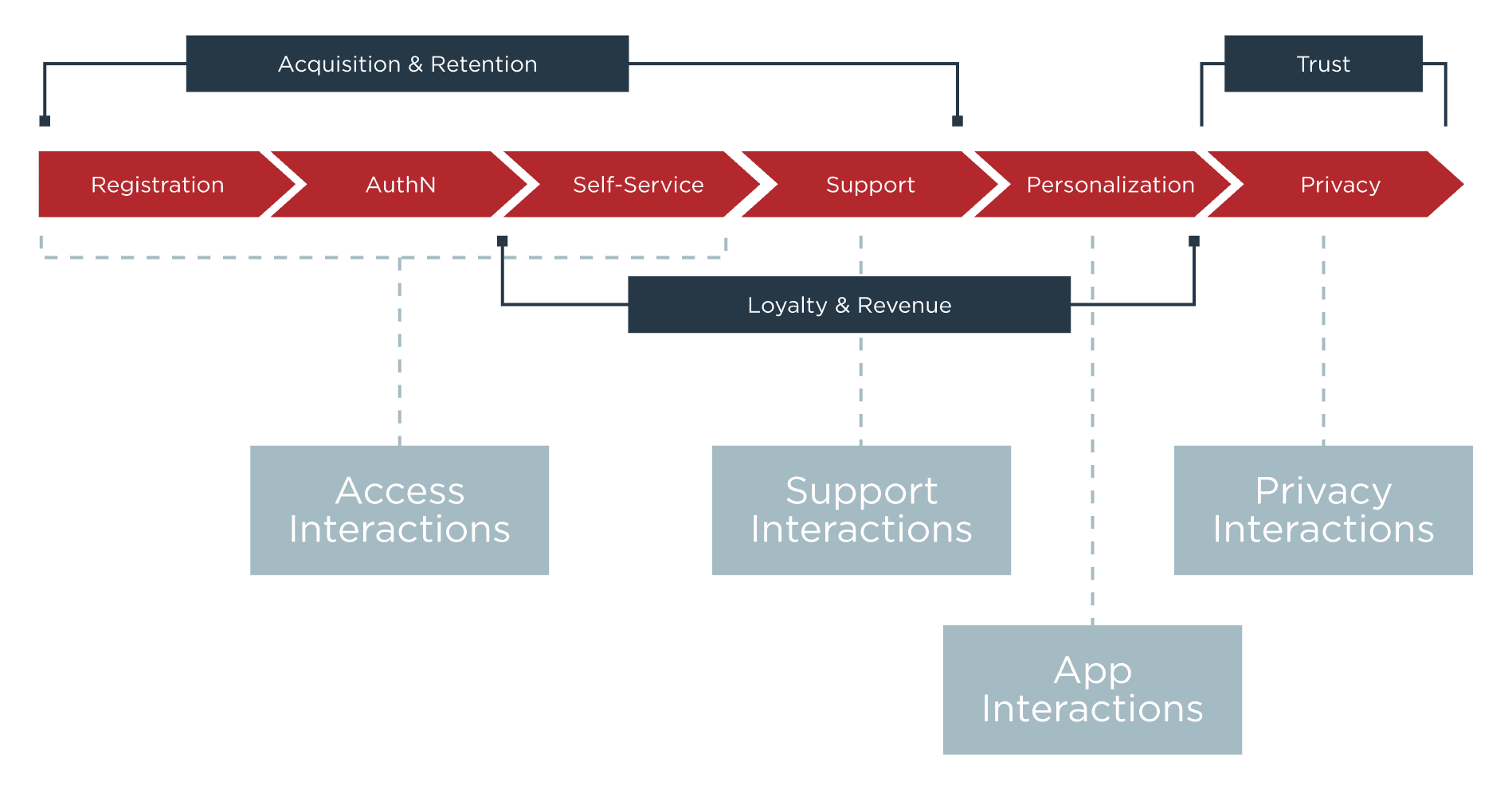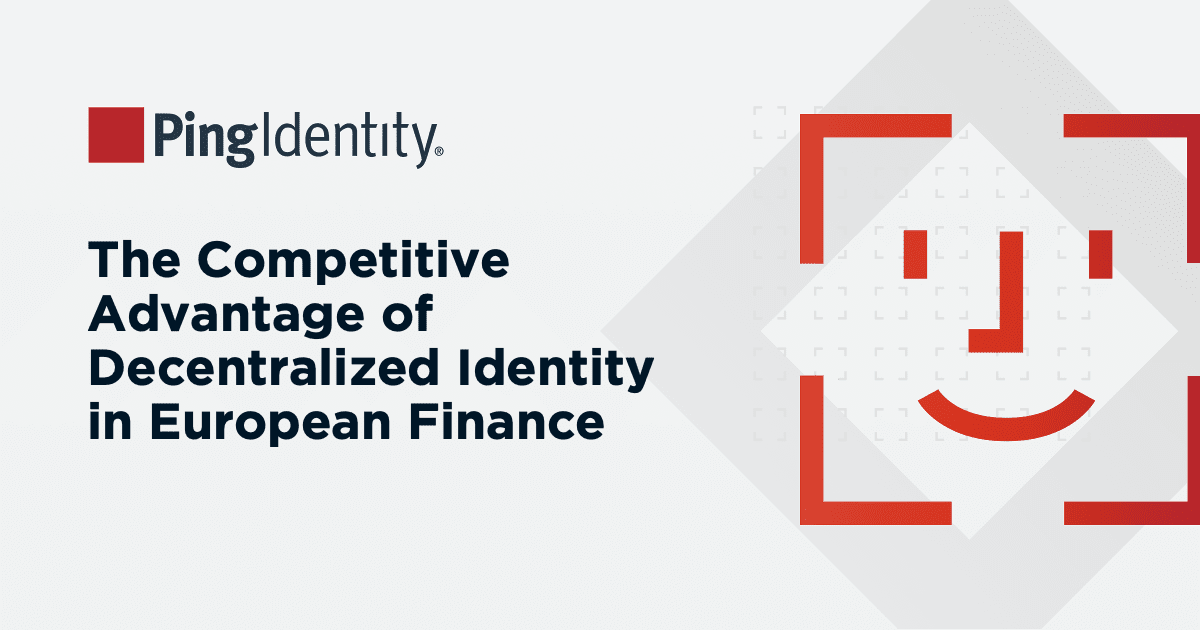Essentially, your customers want your brand to delight users with easy, simple digital experiences, while protecting and respecting them with secure interactions that ensure their information is safe. Innovative digital experiences -- by utilizing customer identity solutions-- can deliver tremendous business value by helping brands:
- Acquire and retain customers with features like seamless registration and single-sign on.
- Increase revenue with personalized experiences that can provide cross and up-sell opportunities.
- Build loyalty through protecting data and privacy with frictionless security.
Additionally, with the rise of customer online engagement, leveraging customer identity to innovate digital experiences can help set a brand apart from the competition.
To start, brands should focus innovation at key consumer interaction points. By following these steps based on four interaction points -- with corresponding tips -- you can successfully create the digital experiences that your customers want, all while answering the question “Who are you?”.
Interaction Point #1: Access
Our survey found that 56% of online consumers have abandoned an online service when logging in was too frustrating and that 63% of consumers are likely to leave an online service for a competitor who makes it significantly easier to authenticate identity. This means that brand loyalty is learned at login.
Here’s how you can accomplish this:
Establish Consistent Access
Make registration and login simple. It should be easy and consistent across every digital property to reduce any friction.
For example, at registration, only ask what you absolutely require to start engaging with your customers to ensure customer identity. Otherwise, you will risk them abandoning your brand due to too many questions or too many security hoops that cause frustration.
Based on your industry, we recommend one set of credentials to access all applications. Let your consumers utilize social registration and log-in to streamline the process.
Remove Passwords
“46% would prefer to use a service or site that offers an alternative to passwords.” If there’s any one reason to not use passwords, it’s because customers hate them! There are often too many complex requirements which results in users forgetting them, and that can then lead to account lockouts. Additionally, brands also hate passwords because they just aren’t secure. Getting rid of passwords altogether is then a win-win.
Create Savvy MFA Alternatives
All this considered, account security is still a priority for users -- they just want alternatives. In fact, according to the same survey report “Consumers are eager for alternative methods of entering personal information, with more than half (58%) comfortable with the idea of a digital ID capability that allows personal information to be stored securely on a mobile device and shared electronically.”
So, make MFA easy with customer-friendly authentication methods that include SMS and Email OTP (SMS made easier than ever before with Android, iOS, MacOS OTP autofill capabilities), push notifications, and biometrics. Plus, MFA is cool now -- even John Oliver tells people to use it!
Interaction Point #2: Application
Create Consistent Multi-Channel Experiences
Make sure customers can easily access and modify their profile information and instantly see changes across all digital properties. Your customers shouldn’t have to update their info for every piece of information. For example, if your consumer moves and updates their address, they should see that reflected in every app they have with their bank.
Personalize the Experience
Accessing a single source of truth for customer data (you know what your customer’s preferences are) allows you to drive revenue through cross-and-up sales. Therefore, give your brand a unified view of your customer with a single source of customer data. This allows applications to access the same preference information about customers to tailor the experience across every digital property.
Interaction Point #3: Support
Establish Seamless Support Interactions
Even after you’ve made these login changes, in the event that customers still need help logging in, make it as simple for them to authenticate as possible when they call customer support. This can be done by using push notifications or biometrics to verify a user’s identity rather than having them prove it with knowledge-based security questions which can easily be forgotten. After all, we all go through phases with our favorite ice cream flavor.
You can do this by making it possible for your support reps to know the identity of the customer when they pick up the phone. (I.e. Start the convo off with “Hi Sam, how can I help you?” rather than “Hi, who am I speaking with?”)
Getting identity right at support interactions can increase customer loyalty by quickly reducing frustration. Customer support reps can get right to solving the problem the customer needs help with, and both parties can spend less time overall, increasing brand loyalty and productivity for your team.
Interaction Point #4: Privacy
The next alarming statistic from our survey states that “60% have dropped an account entirely over privacy concerns, including 46% who have done so more than once.” The same report found that “57% are now reviewing their privacy settings at least half the time when setting up a new account or signing in online and 72% have manually adjusted the profile settings of their accounts to control privacy at least once.”
So, how can you make sure that your users feel comfortable and that you’re taking their privacy seriously?
Capture and Enforce Privacy
Make privacy secure and transparent by making privacy preferences easily available to your users. Customers should be able to not only see how their data is being shared, but control it.
Even though you must collect and enforce consent by making consumers read your privacy policy and check off the magic box needed to ensure customer privacy, getting this right can help your brand make privacy a competitive differentiator. Earn your customer trust and you will end up with a loyal advocate.
Ultimately, brand loyalty is all about streamlining the customer journey. Successful brands are those that are able to ultimately meet digital demand and business goals, including, but not limited to:
- Customer acquisition/retention
- Increased revenue
- Building loyalty and trust
- Delivering competitive differentiation
Being able to enhance customer identity throughout the entire user journey enables brands to innovate the digital experience with the ability to establish consistent and frictionless access across every channel, all while boosting security by capturing and enforcing privacy.
By creating an easy login experience across multiple channels, providing privacy controls and data transparency for users, brands can know who their customers are and customers can feel comfortable knowing that their experience is a bit more personalized.
Yet, manually innovating all of these attributes sounds like it would be a time-consuming and expensive process. Luckily, utilizing a customer identity and access management (CIAM) solution solves these challenges while helping you efficiently meet brand loyalty goals.





